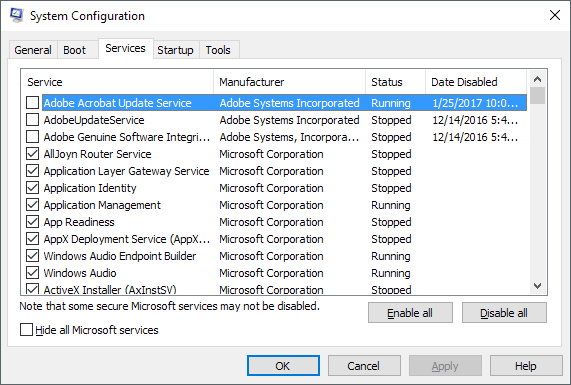Welcome to a comprehensive guide on Bhir.exe error fix, Windows analysis, removal techniques, and an extensive malware database. In this article, we delve into the intricacies of tackling Bhir.exe errors, understanding Windows vulnerabilities, and equipping you with valuable insights to safeguard your system against potential threats. Join us as we explore effective solutions and empower you to maintain a secure and efficient computing experience.
What is bhir.exe?
Bhir.exe is an executable file that is associated with the program B.exe. It is commonly found in the C:ProgramDatab directory on Windows operating systems. The file size and version may vary depending on the specific version of the program.
Bhir.exe is not a system file and can be safely removed or replaced if necessary. However, it is important to note that removing or replacing this file may cause errors or problems with the program it is associated with.
If you are experiencing errors or issues related to bhir.exe, it is recommended to analyze your Windows system, consult a malware database, and follow a removal guide for assistance. Additionally, you may need to check your startup entries and Shell Folders for any references to bhir.exe that may be causing the error messages.
Please note that modifying or deleting files in the Windows directory should be done with caution, and it is recommended to create a backup of your important files before making any changes.
Is bhir.exe safe?
bhir.exe is a Windows executable file that is associated with the b.exe program. It is located in the C:ProgramDatab directory and is commonly found in Windows 8 and Windows 10 systems.
The bhir.exe file is not a system file and is not required for the proper functioning of Windows. It is recommended to analyze and remove this file if it is causing errors or if it is associated with a malware threat.
To fix errors related to bhir.exe, you can try the following steps:
1. Disable the b.exe startup entry in the system’s registry.
2. Remove the bhir.exe file from the C:ProgramDatab directory.
3. Run a malware scan using a reliable antivirus program to ensure that your system is free from any threats.
If you are unsure about the safety of bhir.exe or need further assistance in fixing the error, it is recommended to seek help from a professional or the developer of the program.
Common errors associated with bhir.exe
- Scan for Malware:
- Open your preferred antivirus software.
- Initiate a full system scan.

- Follow the prompts provided by the antivirus software to remove any detected malware.
- Update Windows:
- Go to the Windows Start menu and click on “Settings”.
- Select “Update & Security”.
- Click on “Check for updates” and wait for the process to complete.
- If any updates are available, click on “Install” to update your system.
- Check for System File Corruption:
- Type “Command Prompt” in the Windows search bar.
- Right-click on “Command Prompt” and select “Run as administrator”.

- In the Command Prompt window, type “sfc /scannow” and press Enter.
- Wait for the scan to complete and follow any instructions provided.
- Perform a Clean Boot:
- Press Windows Key + R to open the Run dialog box.
- Type “msconfig” and click OK.
- In the System Configuration window, go to the “Services” tab.
- Check the box that says “Hide all Microsoft services”.

- Click on “Disable all” to disable all the remaining services.
- Go to the “Startup” tab and click on “Open Task Manager”.

- In the Task Manager window, disable all the startup items.
- Close the Task Manager and go back to the System Configuration window.
- Click on “Apply” and then “OK”.
- Restart your computer for the changes to take effect.
- Reinstall or Update the Program:
- Go to the Windows Start menu and click on “Control Panel”.
- Click on “Programs” or “Programs and Features”.

- Locate the program associated with the bhir.exe error.
- Right-click on the program and select either “Uninstall” or “Update”.
- Follow the prompts provided to complete the process.
- Perform a System Restore:
- Press Windows Key + R to open the Run dialog box.
- Type “rstrui” and click OK.

- In the System Restore window, click on “Next”.
- Select a restore point prior to experiencing the bhir.exe error.
- Click on “Next” and then “Finish” to initiate the system restore process.
- Wait for the restoration to complete and restart your computer.

How to repair or remove bhir.exe
To repair or remove bhir.exe, you can follow these steps:
1. Disable the startup entry: Open the Task Manager by pressing Ctrl+Shift+Esc, go to the Startup tab, and disable any entry related to bhir.exe.
2. Identify the file location: Right-click on the bhir.exe file, select Properties, and go to the General tab. Look for the File Location or Location field to determine the exact location of the file.
3. Remove the file: If you suspect bhir.exe is malware or unwanted, delete the file from its location. Make sure to empty the Recycle Bin afterward.
4. Perform a system scan: Use a reliable antivirus or anti-malware program to scan your computer for any remaining threats. Remove any detected malware or potentially unwanted programs.
5. Repair or replace the file: If bhir.exe is a legitimate system file and you’re experiencing errors, try repairing or replacing it. You can search for a clean version of the file online and replace it in its original location.
Remember to always exercise caution when dealing with system files and be sure to have a backup of important files before making any changes.
